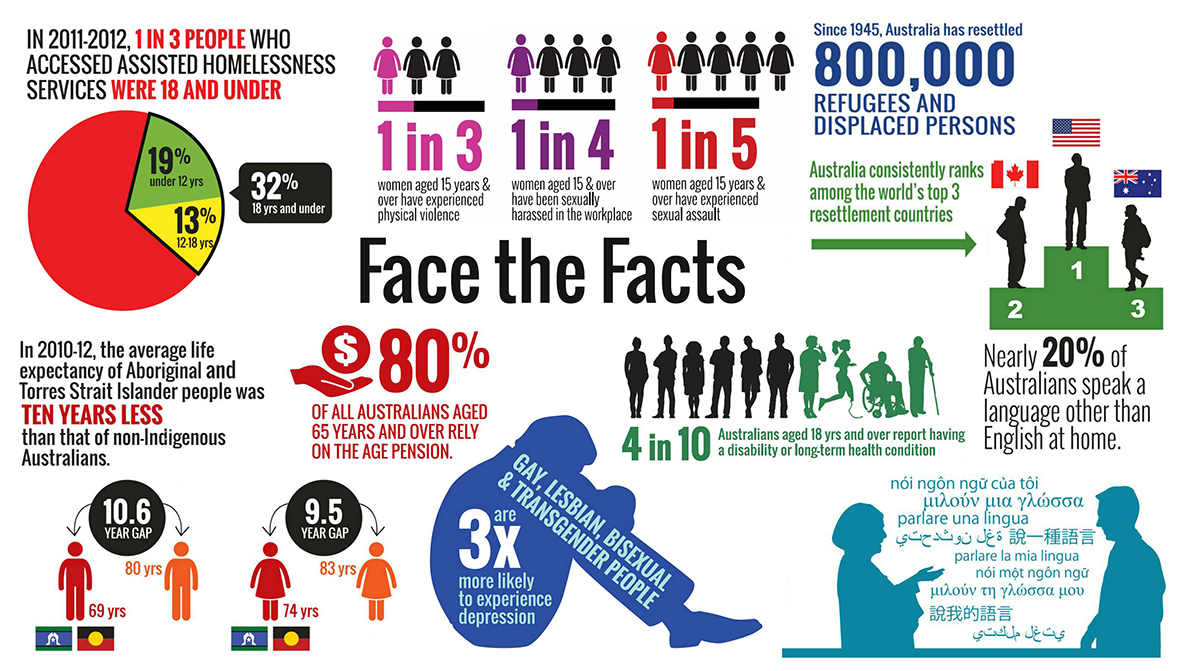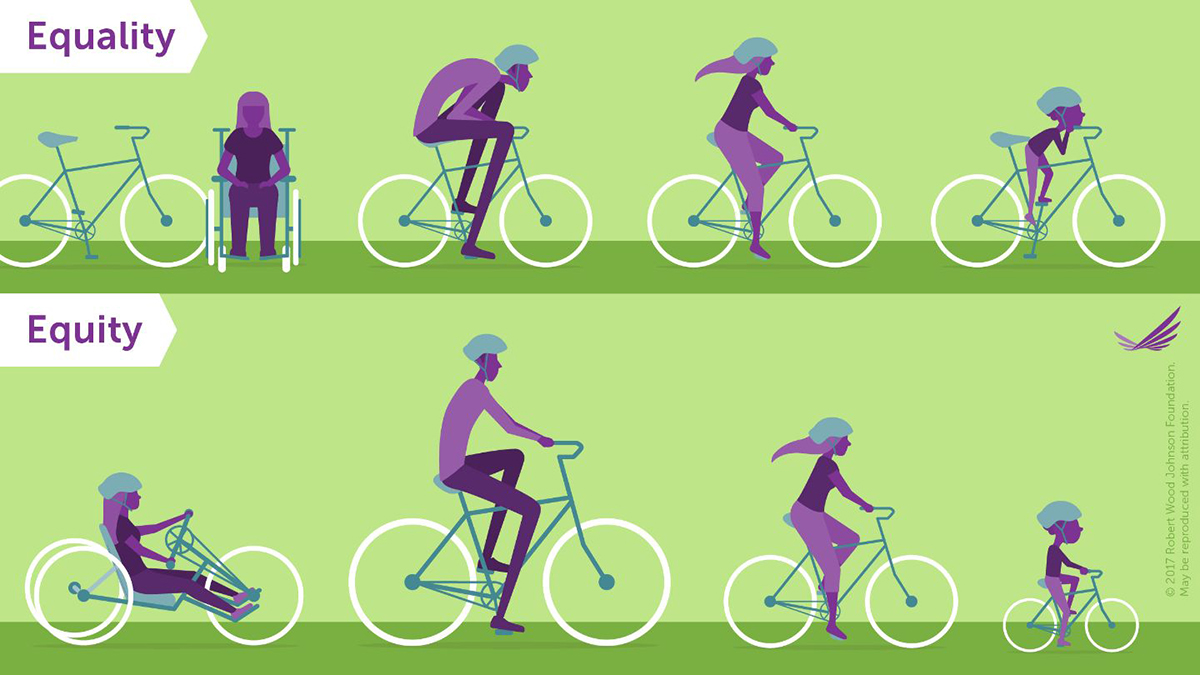Equity and co-design
Co-design is often used as a method to correct issues in the health system that result from inequity, however care needs to be taken to ensure that inequitable power relationships are not reproduced/enforced in your team, that everyone has a seat at the table and their voices are listened to.
What is health equity? Why is it so important?
Health equity is the absence of unfair, avoidable or remediable differences among groups of people, whether those groups are defined socially, economically, demographically, or geographically or by other dimensions of inequality (e.g. sex, gender, ethnicity, disability, or sexual orientation).

Equity is different to equality. Equality is where everyone is given the same thing; this is only fair if everyone starts at the same starting point.

Source: Robert Wood Johnson Foundation
Tips for practicing in an equity-centric manner
If you’re working with a group that is rarely invited to the table, diversity and inclusion is more important than ever – we need to ensure that the changes resulting from co-design do not heighten inequities in care.
- The project should be lead or at least co-led by someone who identifies as part of the community you are working with. Governance and decision making within your project should support co-governance and co-ownership of both the process and the outcome.
- Consider forming a co-design team where more than half of participants identify as part of the community you are working with (e.g. 4 of 7 members of the co-design team identify as having a disability). This includes both consumers and staff.
- Use a peer-to-peer model of engagement – consumer co-lead to connect and engage with the community, run the co-design workshops.
- Identify people with relationships with community to facilitate engagement. There may be people with these relationships within your health service or directorate, so seek them out and invite them to be involved. They may already have events or forums to meet with community.
- Consult with members of the community to identify and address potential barriers to participation. These may include including language/jargon, financial, access, cultural safety and previous experiences.
- Equalise power imbalances through shared governance and decision making (see The Co-design Team for more information).
- Understand the principles of trauma-informed practice to avoid ‘re-traumatising’ and to create a safe environment
- Invest time in building relationships with the community before engaging in the co-design process. Come to them to explore their priorities, needs and thoughts, without having an ‘agenda’.
- Go to the community, don’t expect them to come to you (see The right space for more information).
- Incorporate different ways of engaging with the community to meet how they want to contribute and participate (see Engaging people with lived experience)
- Explore the issue of equity within your co-design team to uncover assumptions and start to build shared understanding before you start co-designing together. These resources may be a good way to broach the conversation with your team.
- Incorporate accessibility into your engagement, processes and the final co-designed outcome.
- When working with Aboriginal and Torres Strait Islander people, you may find these tips and resources useful to guide your engagement and co-design.
- Familiarise yourself with the Metro North Health Equity agenda. Consider how your co-design project can help to work towards health equity and eliminating institutional racism across the public health system.

